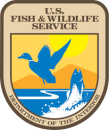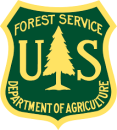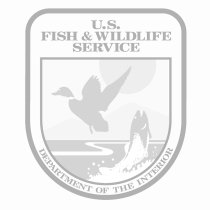Location
States
New MexicoEcosystem
DesertIntroduction
The Sevilleta de la Joya land grant was established by Spain in 1819 to colonize new territory and expand the Spanish influence in Socorro County. Under Mexican rule, the land grant system continued but many land grants were dissolved in 1891 when New Mexico became part of the United States. In 1936, Socorro County sold the Sevilleta de la Joya land grant to a private owner who used the Chihuahuan Desert Grassland as pasture for cattle and sheep for thirty years. Overgrazing reduced perennial and annual grass fuel loads and altered natural fire regimes. Fire suppression increased shrub encroachment, altered nutrient cycling, and shifted plant community structure structure
Something temporarily or permanently constructed, built, or placed; and constructed of natural or manufactured parts including, but not limited to, a building, shed, cabin, porch, bridge, walkway, stair steps, sign, landing, platform, dock, rack, fence, telecommunication device, antennae, fish cleaning table, satellite dish/mount, or well head.
Learn more about structure . Observations from summer wildfires within the refuge have contributed some knowledge of the fire ecology in this area, but these events have been too rare and infrequent to provide complete information. With climate change climate change
Climate change includes both global warming driven by human-induced emissions of greenhouse gases and the resulting large-scale shifts in weather patterns. Though there have been previous periods of climatic change, since the mid-20th century humans have had an unprecedented impact on Earth's climate system and caused change on a global scale.
Learn more about climate change likely to exacerbate the impacts of many disturbances, land managers need knowledge on fire seasonality so that prescribed burns, a nature-based solution, are scheduled at optimal times. Well-established, managed experiments are filling in this information gap in order to support management that aims to increase the resilience and restore the function of semi-arid grasslands. The integration of nature-based solutions into day-to-day work, such as prescribed fire, provides for human well-being and biodiversity benefits. The Service has identified nature-based solutions as a key strategy in the Climate Change Action Program to unify its climate response in accordance with the Department of the Interior’s Nature Based Solutions Policy.
Key Issues Addressed
Wildfires are an important component of grassland systems. In absence of natural fire, managers mimic wildfire through the use of prescribed burns, which are considered a cost-effective method for maintaining grassland integrity and a nature-based solution. However, there is little information on when and how often to implement burns in grasslands because there is no historical fire record. Additionally, burns can have a negative impact on native grasses when applied during drought. Research conducted at the Sevilleta LTER is helping to provide information on when and how much to burn to preserve arid-land grassland integrity and to improve fire management in a changing climate.
Project Goals
- Contribute new knowledge on fire management for desert grasslands
- Increase native grass cover through prescribed burns
- Identify the most effective prescribed burn prescribed burn
A prescribed burn is the controlled use of fire to restore wildlife habitat, reduce wildfire risk, or achieve other habitat management goals. We have been using prescribed burn techniques to improve species habitat since the 1930s.
Learn more about prescribed burn treatments within and across years to achieve desired response in plant communities
Project Highlights
Drought Effects: The sensitivity of Chihuahuan Desert Grasslands to drought is well understood due to experiments at Sevilleta NWR. These studies provide insight for grassland management under imminent extreme water-limitation.
- Adaptive Management: Researchers are exploring how prescribed burn timing and on the ground conditions interact and influence native plant regeneration and plant community composition on several sites. The results of this research will provide guidance to land managers and burn crews for implementation of prescribed burns, a natural climate solution, in arid grassland systems.
- Fire Seasonality for Grassland Recovery: A lack of research on the effect of fire seasonality in Chihuahuan desert grasslands led to the establishment of the fire seasonality experiment in 2007. This experiment assesses the impact of fire seasonality on grassland recovery in Chihuahuan desert ecosystems.
- Prescribed Burns under Different Scenarios: In Central North American grasslands, climate and phenology at the time of burn determine the recovery trajectory of the plant community. The Sevilleta LTER compares native grass recovery under multiple prescribed burn applications. Prescribed burns are conducted under a variety of precipitation scenarios and seasons to capture the natural inter- and intra-annual variability of grassland ecosystems. Prescribed burn treatments are re-applied at ten-year intervals to simulate fire return intervals typically seen in Chihuahuan desert grasslands.
- Nutrient Availability for Vegetation Growth: Grasslands have a strong soil-vegetation interaction that, in addition to sustaining vegetation growth, affects nutrient cycling and nutrient distribution. Organic matter, ammonium and nitrate were measured to test for differences in post-fire nutrient availability.
Lessons Learned
- Fall burn sites showed an increase but also greater interannual variability in species richness, and differed from unburned plant communities. Spring burn sites experienced the greatest increase in forb cover and a decrease in grass cover. Summer burns sites favored a slight increase in species richness.
- A similar recovery trajectory in summer and fall burns indicates land managers have the option and flexibility to schedule prescribed burns outside of the fire season.
- Prescribed burns should be minimized during drought years because it takes longer for grasses to regain ideal patch size and cover under conditions of reduced soil moisture. Ideally, prescribed burns can be applied after rain events when soils and grasses are dry but soil moisture is still available in the root zone. Recovery can take more than ten years if drought persists.
- A decrease in black grama recovery and an increase in forb cover during the first post-fire years affected native plant species productivity and plant community composition regardless of fire seasonality. Subdominant grasses were insignificant to plant community recovery because they had a consistently low cover through time.
- Black grama cover accounted for 31-35% of dissimilarity between burned and unburned plant communities and 38-45% of interannual dissimilarity between spring burned communities.
- Sporobolus speciesand purple threeawn (Aristida purpurea) grasses were unaffected by fire seasonality and their cover decreased through time. James’ galleta(Pleuraphis jamessi) was unaffected by fire seasonality and its cover was consistent through time.
- Ammoniumand nitrate concentrations were unaffected by prescribed burns and did not differ with time since burn. Only summer burns significantly increased soil organic matter content.
Next Steps
- Re-application of prescribed burn treatments on native vegetation after a ten year recovery period
- Continue biannual monitoring of vegetation trends to assess effects of fire seasonality
- Incorporate results from a second round of prescribed burns into analysis of grass recovery and plant community composition
- Monitor soil organic matter, erosion potential, and standing litter to test for the effect of fire seasonality on abiotic processes
Funding Partners
Resources
- Calabrese, L.B., Collins, S.L., Ford, P.L. (2009). “Effects of Seasonal Fire and Nutrient Co-limitation on Chihuahuan Desert Grassland Plant Communities.” Presented at the Ecological Society of America Conference.
- U.S. Fish & Wildlife Service Website for Sevilleta National Wildlife Refuge
- Sevilleta National Wildlife Refuge Property History Timeline
- Drewa, P. B., & Havstad, K. M. (2001). “Effects of fire, grazing, and the presence of shrubs on Chihuahuan desert grasslands.” Journal of Arid Environments 48(4): 429-443.
- Knapp, E.E., Estes, B.L., Skinner, C. N. (2009). “Ecological Effects of Prescribed Fire Season: A Literature Review and Synthesis for Managers.” JFSP Synthesis Reports.4..
- Ladwig, L.M., et al. (2014). “Chihuahuan Desert grassland responds similarly to fall, spring, and summer fires during prolonged drought.” Rangeland Ecology and Management 67(6): 621-628.
- Parmenter, R. R. (2008). “Long-term effects of a summer fire on desert grassland plant demographics in New Mexico.” Rangeland Ecology & Management 61(2): 156-168.
- Thomey, M. L. et al. (2014). “Climate change impacts on future carbon stores and management of warm deserts of the United States.” Rangelands 36(1): 16-24.
Contacts
- Dr. Paulette L. Ford, Research Scientist, US Department of Agriculture Forest Service, plford@fs.fed.us
- Dr. Scott L. Collins, Professor, University of New Mexico, scollins@unm.edu
- Kathy Granillo, Refuge Manager, US Fish and Wildlife Service, Kathy_Granillo@fws.gov
Case Study Lead Author
- Andrea Lopez, CART Graduate Research Assistant, University of New Mexico
Suggested Citation
Lopez, A. (2018). “Prescribed Burns for Grassland Management at the Sevilleta National Wildlife Refuge.” CART. Retrieved from https://www.fws.gov/project/prescribed-burns-grassland-management.







